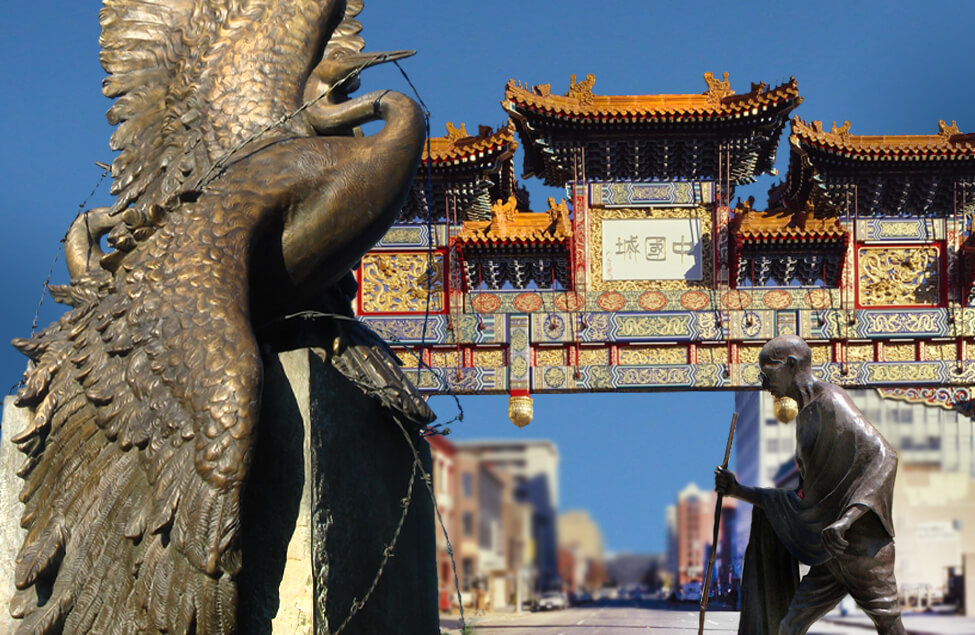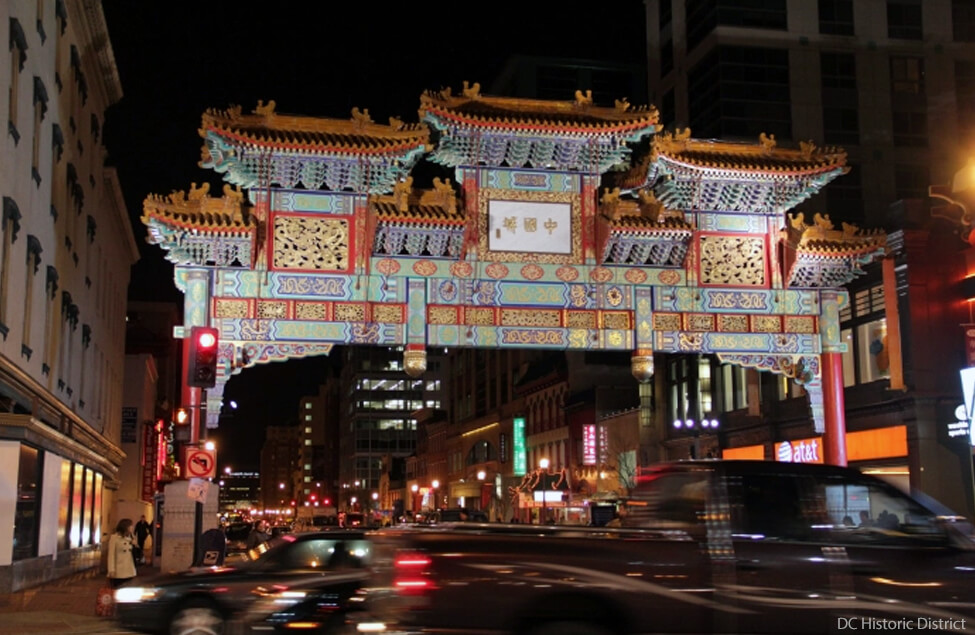
- By Bsrat Mezghebe
- May 19, 2021
Celebrating Asian American and Pacific Islander Heritage Month
In honor of Asian American and Pacific Islander Heritage Month, we are proud to highlight memorials and sites in the National Capital Region that celebrate the rich history and contributions of this diverse group.

The memorial’s landscaped plaza features large granite boulders set in a shallow pool that represent the five generations of Japanese Americans affected by the war and symbolize the archipelago of Japanese islands. The most striking element is a central bronze sculpture of two Japanese cranes trapped in barbed wire encircled by a curved granite wall with inscriptions of the names of the internment camps, the names of Japanese Americans who died fighting in the war, and quotes by President Harry S. Truman and President Ronald Reagan. The sculptor, Nina Akamu, is a third-generation Japanese American artist whose grandfather died in a Hawaiian internment camp.

Designed by Alfred H. Liu, a Chinese American architect who emigrated from Taiwan, the striking and colorful archway stands 47 feet tall, spans 75 feet of roadway, and weighs 120 tons. It was created in the style of the Ming dynasty and includes seven roofs covered in 7,000 glazed tiles, 35,000 wooden pieces decorated with 23-karat gold, and 284 dragons. The decorative elements were fabricated in China and installed by 16 Chinese craftsmen who traveled to Washington.

Located on Massachusetts Avenue, NW, in front of the Embassy of India, the statue depicts Gandhi in ascetic garb and is mounted on a 16-ton plinth of ruby granite from the Indian state of Karnataka. The statue is situated in a circular plaza of gray granite pavers, along with three slabs of Karnataka red granite displaying inscriptions honoring Gandhi's memory.
Commemorative works are key elements in Washington, D.C.’s symbolic landscape, telling stories of our nation’s history and recognizing leaders, events, and groups. NCPC plays a critical role in guiding the location and design of these works in the National Capital Region through policy and review. Learn more by clicking on the buttons below.
Memorials Map Japanese American Memorial to Patriotism Chinatown's Friendship Archway Mahatma Gandhi Memorial


